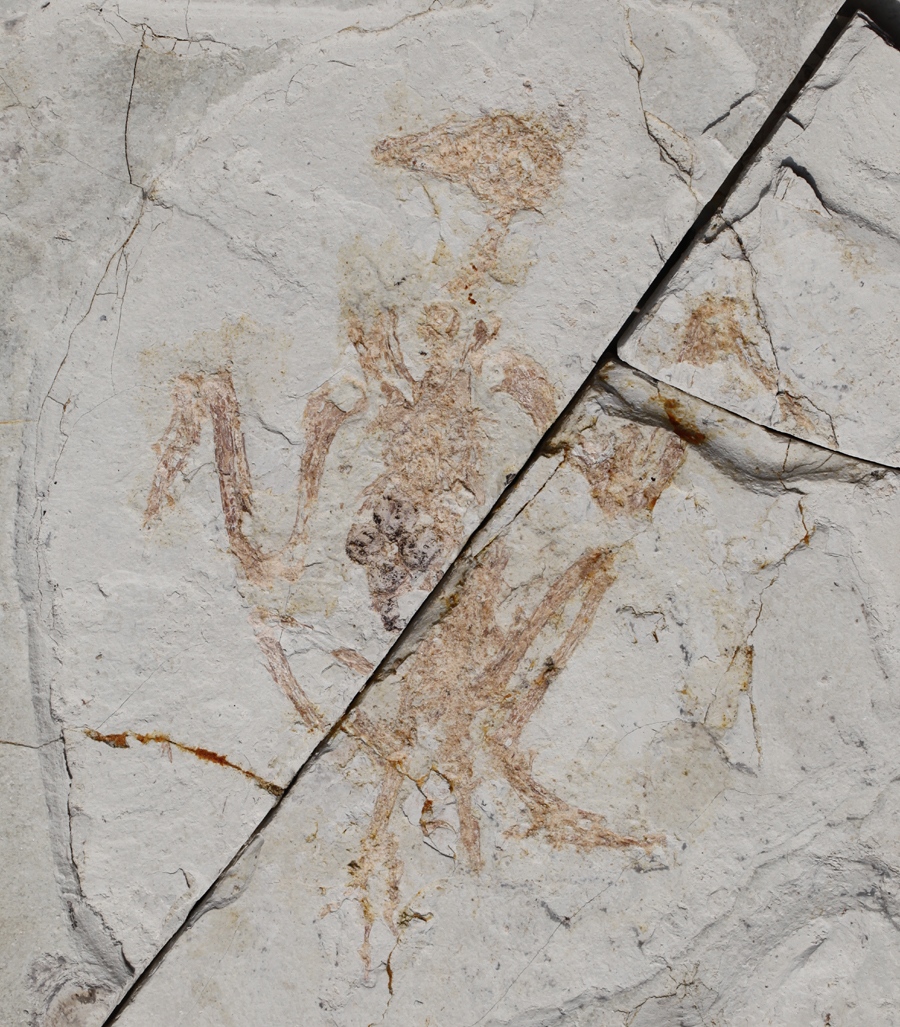| Location: Home > News > Events |
| Nature: Exquisite bird fossils reveal egg-producing ovary |
|
Exquisite bird fossils reveal egg-producing ovary
Early avians lost one of two ovaries to take flight
Palaeontologists have discovered the first fossilized traces of developing egg cells in ancient fossil birds, showing a significant trait that already 120 million years ago separate birds from their ancestors. Like modern birds, these ancestors already had reduced their working ovaries to one, setting them apart from their dinosaur cousins.
Zhonghe Zhou, a palaeontologist at the Chinese Academy of Sciences in Beijing, and colleagues studied a fossil specimen of Jeholornis — an early bird that retained archaic characteristics such as a long bony tail — as well as a pair of fossils that belong to the enantiornithines, another extinct group of birds. All three fossils, according to Zhou and co-authors, contain preserved ovarian follicles, delicate structures containing single egg cells that would have developed into eggs. The researchers present their findings online today in Nature1. “It took us a while to figure out what these strange circular structures actually represent,” says Zhou. The small structures might possibly have been seeds or tiny stones the birds had swallowed to grind food in their digestive system. But on the basis of the size, shape, and position of the rounded structures, the team ruled out the alternative explanations and interpreted them as ovarian follicles. Left sided The researchers point out that the follicles all seem to be on the left side in the three birds, just as they are in their modern relatives. In contrast, the fossilized hips of an oviraptorosaur — a feathered, beaked, theropod dinosaur — contained two eggs, hinting that one egg developed in each oviduct and indicating that non-avian dinosaurs retained two functioning oviducts, similar to modern crocodiles2. Like their reptilian ancestors, ancient birds produced a greater number of eggs at a time than do modern birds. Had the Jeholornis's follicles developed into eggs, she might have laid as many as 20 in a clutch, Zhou says. The two enantiornithine specimens would have laid five and twelve eggs, respectively. Taking flight
But why did the reproductive plumbing change in birds? Jeholornis and the two enantiornithines were relatively close to the transition from non-avian dinosaurs to 'avian dinosaurs', Zhou and colleagues say, suggesting that the switch to one oviduct seems to be correlated with the evolution of flight — something that biologists had long suspected. Palaeontologist Thomas Holtz of the University of Maryland in College Park agrees that the size, shape and position of the rounded bodies are consistent with the interpretation as follicles, but notes that alternative hypotheses — such as arthropod, amphibian egg or plant fossils — can’t be ruled out just yet. “High-quality scanning-electron microscope scans of the objects might help resolve this,” he says. Still, provided that the objects really are follicles, Holtz agrees that the fossils show an intermediate state between non-avian dinosaurs and modern birds, and that the presence of one active oviduct would be “loss of a redundant organ to save weight”. (http://www.nature.com/news/exquisite-bird-fossils-reveal-egg-producing-ovary-1.12616) |
